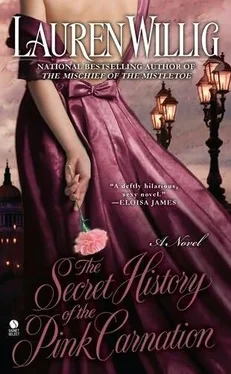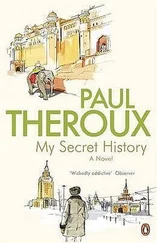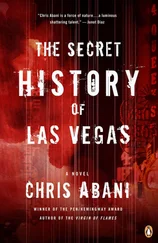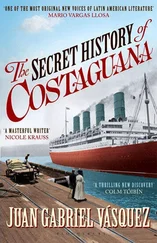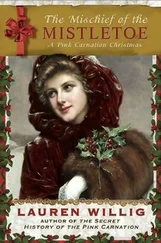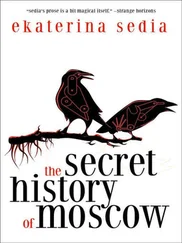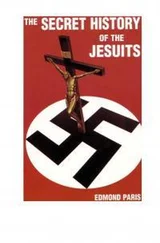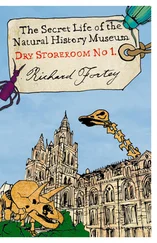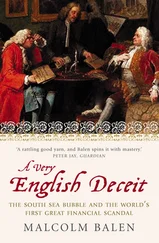At Mrs. Selwick-Alderly’s gentle prompting, I found myself rambling on about how I’d become interested in history (too many historical novels at an impressionable age), the politics of the Harvard history department (too complicated to even begin to go into), and why I’d decided to come to England. When the conversation began to verge onto what had gone wrong with Grant (everything), I hastily changed the subject, asking Mrs. Selwick-Alderly if she had heard any stories about the nineteenth-century spies as a small child.
“Oh, dear, yes!” Mrs. Selwick-Alderly smiled nostalgically into her teacup. “I spent a large part of my youth playing spy with my cousins. We would take it in turns to be the Purple Gentian and the Pink Carnation. My cousin Charles always insisted on playing Delaroche, the evil French operative. The French accent that boy affected! It put Maurice Chevalier to shame. After all these years, it still makes me laugh just to think of it. He would paint on an extravagant mustache—in those days, all the best villains had mustaches—and put on a cloak made out of one of Mother’s old wraps, and storm up and down the lawn, shaking his fist and swearing vengeance against the Pink Carnation.”
“Who was your favorite character?” I asked, charmed by the image.
“Why, the Pink Carnation, of course.”
We smiled over the rims of our teacups in complete complicity.
“But you have an added interest in the Pink Carnation,” Mrs. Selwick-Alderly said meaningfully. “Your dissertation, wasn’t it?”
“Oh! Yes! My dissertation!” I outlined the work I had done so far: the chapters on the Scarlet Pimpernel’s missions, the Purple Gentian’s disguises, the little I had been able to discover about the way they ran their leagues.
“But I haven’t been able to find anything at all about the Pink Carnation,” I finished. “I’ve read the old newspaper accounts, of course, so I know about the Pink Carnation’s more spectacular missions, but that’s it.”
“What had you hoped to find?”
I stared sheepishly down into my tea. “Oh, every historian’s dream. An overlooked manuscript entitled, How I Became the Pink Carnation and Why. Or I’d settle for a hint of his identity in a letter or a War Office report. Just something to give me some idea of where to look next.”
“I think I may be able to help you.” A slight smile lurked about Mrs. Selwick-Alderly’s lips.
“Really?” I perked up—literally. I sat so bolt upright that my teacup nearly toppled off my lap. “Are there family stories?”
Mrs. Selwick-Alderly’s faded blue eyes twinkled. She leaned forward conspiratorially. “Better.”
Possibilities were flying through my mind. An old letter, perhaps, or a deathbed message passed along from Selwick to Selwick, with Mrs. Selwick-Alderly the current keeper of the trust. But, then, if there were a Selwick Family Secret, why would she tell me? I abandoned imagination for the hope of reality. “What is it?” I asked breathlessly.
Mrs. Selwick-Alderly rose from the sofa with effortless grace. Setting her teacup down on the coffee table, she beckoned me to follow. “Come see.”
I divested myself of my teacup with a clatter, and eagerly followed her towards the twin windows that looked onto the square. Between the windows hung two small portrait miniatures, and for a disappointed moment, I thought she meant merely to lead me to the pictures—there didn’t seem to be anything else that might warrant attention. A small octagonal table to the right of the windows bore a pink-shaded lamp and a china candy dish, but little else. To the left, a row of bookcases lined the back of the room, but Mrs. Selwick-Alderly didn’t so much as glance in that direction.
Instead, she knelt before a large trunk that sat directly beneath the portrait miniatures. I’ve never been into domestic art, or material history, or whatever they’re calling it, but I’d spent enough afternoons loafing around the British galleries of the Victoria and Albert to recognize it as early eighteenth century, or an extraordinarily good reproduction. Different-colored woods marked out fanciful patterns of flowers and birds across the lid of the trunk, while a large bird of paradise adorned the center.
Mrs. Selwick-Alderly withdrew an elaborate key from her pocket.
“In this trunk”—she held the key poised before the lock—“lies the true identity of the Pink Carnation.”
Stooping, Mrs. Selwick-Alderly fitted the key—almost as ornately constructed as the chest itself, with the end twisted into elaborate curlicues—into the brass-bound lock. The lid sprang open with well-oiled ease. I joined Mrs. Selwick-Alderly on the floor, without even realizing how I’d gotten there.
My first glance was a disappointing one. Not a paper in sight, not even the scrap of a forgotten love letter. Instead, my sweeping gaze took in the faded ivory of an old fan, a yellowed scrap of embroidered cloth, the skeletal remains of a bouquet still bound with a tattered ribbon. There were other such trinkets, but I didn’t take much notice as I sank down onto my haunches beside the trunk.
But Mrs. Selwick-Alderly wasn’t finished. Deliberately, she eased one blue-veined hand along either side of the velvet lining and tugged. The top tray slid easily out of its supports. Within . . . I was back on my knees, hands gripping the edge of the trunk.
“This . . . it’s amazing!” I stuttered. “Are these all . . . ?”
“All early nineteenth century,” Mrs. Selwick-Alderly finished for me, regarding the contents of the trunk fondly. “They’ve all been sorted by chronological order, so you should find it easy going.” She reached into the trunk, picked up a folio, and then put it aside with a muttered “That won’t do.” After a moment’s peering into the trunk and making the occasional clucking noise, she seized on a rectangular packet, one of those special acid-free cardboard boxes they use to protect old library books.
“You’d best start here,” she advised, “with Amy.”
“Amy?” I asked, picking at the string binding the box together.
Mrs. Selwick-Alderly started to respond, and then checked herself, rising to her feet with the help of the edge of the box.
“These letters tell the tale far better than I could.” She cut off my incoherent questions with a kindly, “If you need anything, I’ll be in my study. It’s just down the hall to the right.”
“But, who is he?” I pleaded, pivoting after her as she walked towards the door. “The Pink Carnation?”
“Read and see. . . .” Mrs. Selwick-Alderly’s voice drifted behind her through the open door.
Urgh. Gnawing on my lower lip, I stared down at the manuscript box in my hands. The gray cardboard was smooth and clean beneath my fingers; unlike the battered, dusty old boxes in the stacks of Widener Library, someone cared for these papers well. The identity of the Pink Carnation. Did she really mean it?
I should have been tearing at the twine that bound the box, but there was something about the waiting stillness of the room, broken only by the occasional crackle of burning bark upon the grate, that barred abrupt movement. I could almost feel the portrait miniatures on the wall straining to peer over my shoulder.
Besides, I counseled myself, mechanically unwinding the string, I shouldn’t let myself get too excited. Mrs. Selwick-Alderly might be exaggerating. Or mad. True, she didn’t look mad, but maybe her delusion took the form of thinking she held the key to the identity of the Pink Carnation. I would open the box to find it contained a stack of Beatles lyrics or amateur poetry.
The last loop of string came free. The cardboard flap fell open, revealing a pile of yellowed papers. The date on the first letter, in a scrawling, uneven hand, read 4 MARCH, 1803.
Читать дальше
